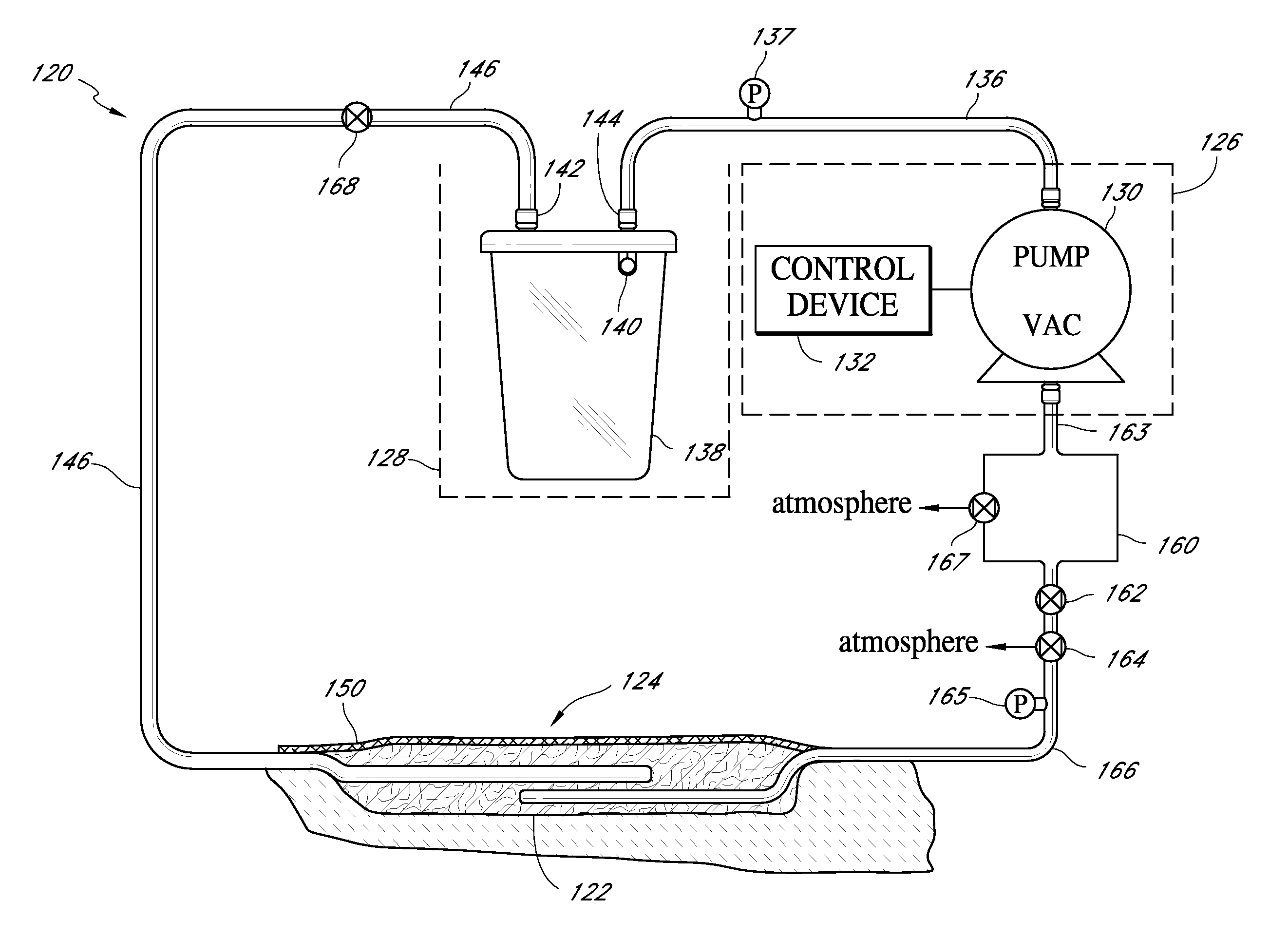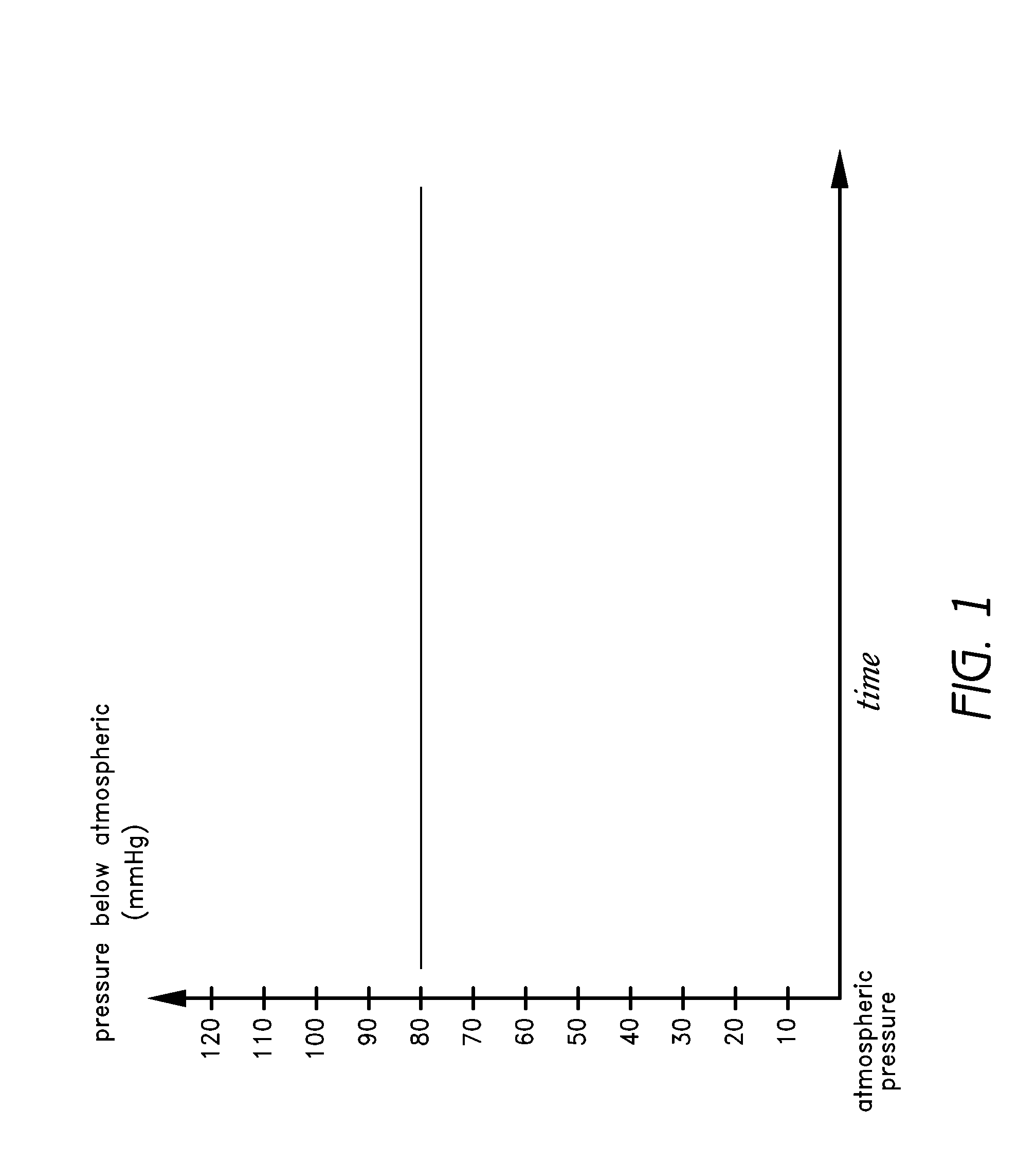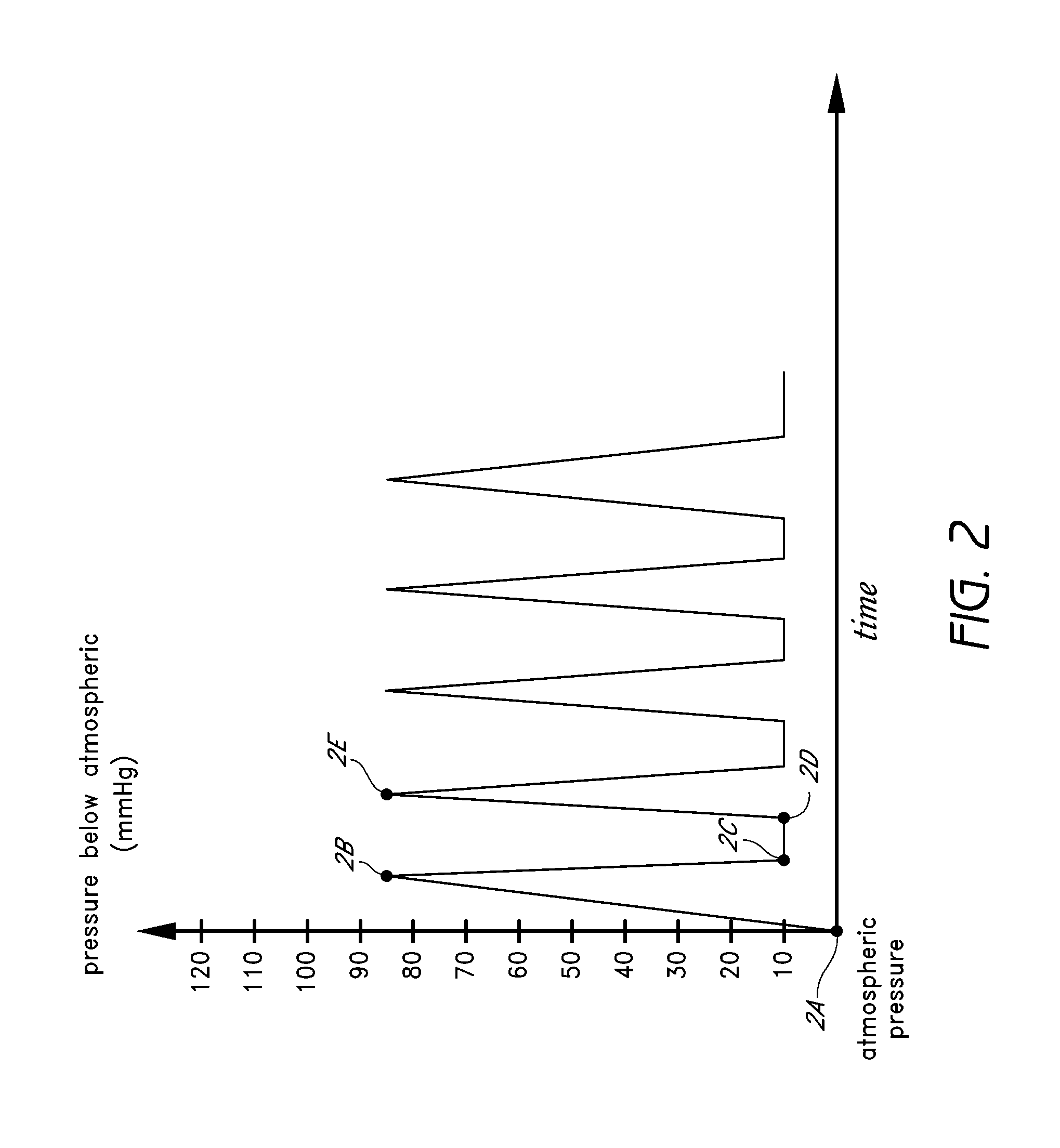Sustained variable negative pressure wound treatment and method of controlling same
a negative pressure, sustained technology, applied in the direction of wound drain, diagnostic recording/measuring, bandages, etc., can solve the problems of large or infected wounds, inability to spontaneously close, wounds that cannot successfully fight bacterial infection, etc., to achieve rapid and efficient manner
- Summary
- Abstract
- Description
- Claims
- Application Information
AI Technical Summary
Benefits of technology
Problems solved by technology
Method used
Image
Examples
Embodiment Construction
[0030]Negative pressure can be used to assist with the healing of wounds, and in certain embodiments of the invention, can be used in three general modes. The first general mode is a continuous mode, wherein negative pressure is applied in a constant manner up to a predetermined pressure, where the negative pressure is held at this level. For example, FIG. 1 illustrates continuous application to the wound site of negative pressure 80 mmHg below atmospheric pressure.
[0031]The second general mode may be characterized as being intermittent. In the intermittent mode, the negative pressure is preferably generally applied to the wound and then either released or disabled, allowing for a gentle release of the pressure back to atmospheric pressure. A variation of the intermittent mode, referred to herein as sustained variable negative or reduced pressure, comprises application of the negative pressure to the wound at a first magnitude and then either releasing or disabling the pressure such...
PUM
 Login to View More
Login to View More Abstract
Description
Claims
Application Information
 Login to View More
Login to View More - R&D
- Intellectual Property
- Life Sciences
- Materials
- Tech Scout
- Unparalleled Data Quality
- Higher Quality Content
- 60% Fewer Hallucinations
Browse by: Latest US Patents, China's latest patents, Technical Efficacy Thesaurus, Application Domain, Technology Topic, Popular Technical Reports.
© 2025 PatSnap. All rights reserved.Legal|Privacy policy|Modern Slavery Act Transparency Statement|Sitemap|About US| Contact US: help@patsnap.com



